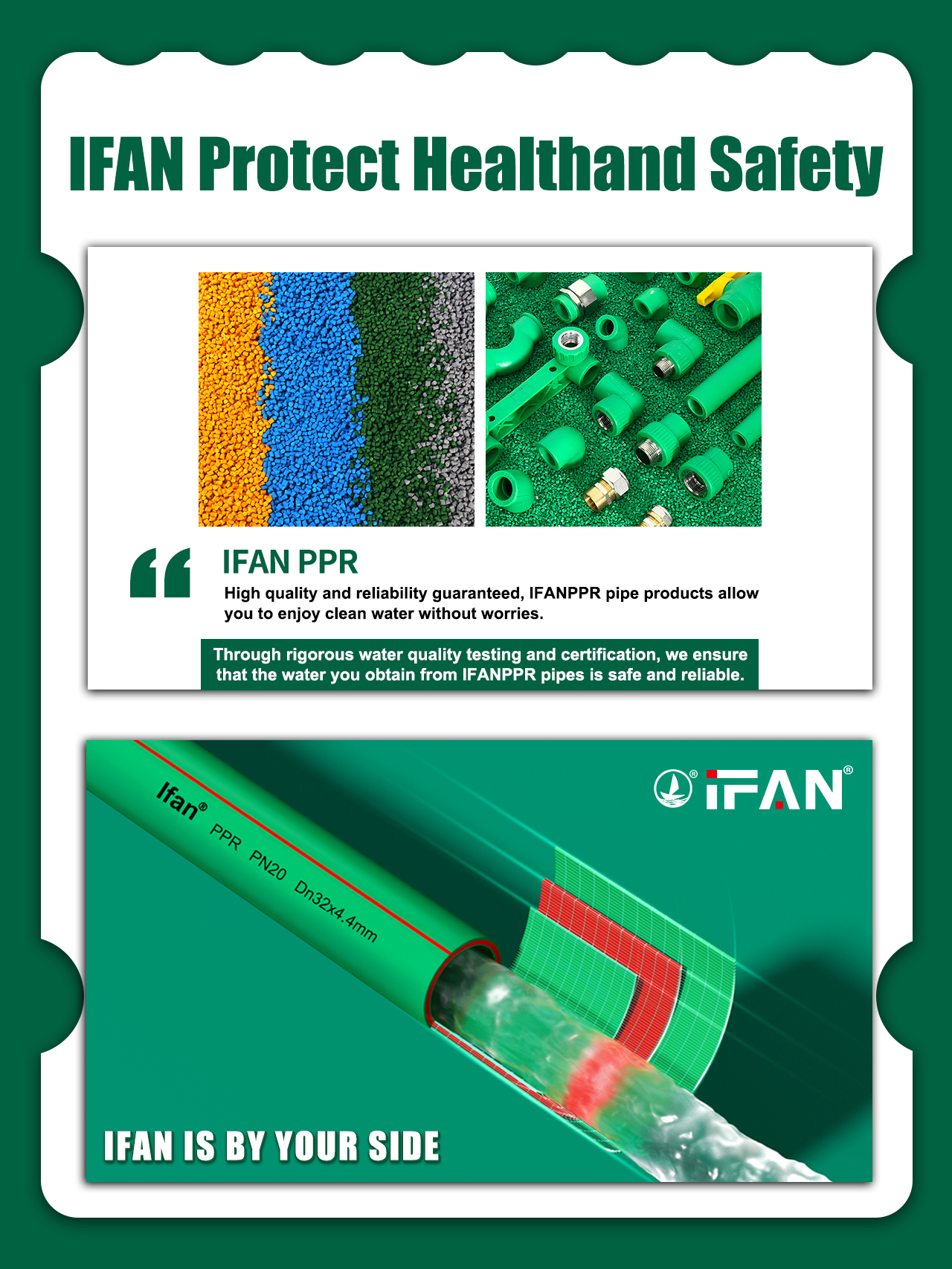In daily decoration, the choice of water pipes is a very important part. The main materials used for water pipes are PPR, PVC, HDPE, PPH, brass and iron pipes. Each material has its own unique characteristics and applications. The differences and characteristics of these water pipes are introduced separately below.IFAN factory 30+ years manufacture experience support color/size customization support free sample.Welcome to consult for catalog and free samples.This is our Facebook Website: www.facebook.com
PPR pipe
PPR pipe is the abbreviation of polypropylene random copolymer pipe. It is characterized by high temperature, high pressure and high performance. Because the PPR pipe is made of polypropylene, it is environmentally friendly and has a long service life. The advantages of PPR pipes are its non-toxic, odorless, anti-bacterial and mildew-proof, high temperature resistance, pressure resistance, etc. These advantages make PPR pipes widely used in drinking water pipes, heating pipes, etc. In addition, the connection method of the PPR pipe is a hot-melt connection. After heating with a hot water pipe, it is convenient and quick, and the connection is firm, which can reduce water leakage.
PVC pipe
PVC pipe is a reinforced plastic pipe made of polyvinyl chloride resin. The advantages of PVC pipes are cheap price, good sealing performance, light weight and easy processing. Because the inner wall of the PVC pipe is relatively smooth, its flow resistance is small, so the water flow speed is fast, which makes this type of pipe widely used in sewage and rainwater drainage. In addition, PVC pipe has the advantages of not easy aging, corrosion resistance, not easy to be corroded by chemical substances, and anti-corrosion.

HDPE pipe
HDPE pipe is a type of pipe made of high-density polyethylene. Its characteristics are corrosion resistance, not easy to aging, anti-leakage and so on. HDPE pipe has high hardness, high strength, light weight, good toughness and flexibility, so it is widely used in underground water pipelines and water supply and drainage systems.
PPH tube
PPH pipe is the abbreviation of polypropylene homopolymer pipe. Compared with PPR pipe, PPH pipe has higher strength and stronger corrosion resistance. PPH pipes are mainly used in pipeline transportation in the chemical industry and sewage treatment.
Brass tube
Brass pipe is a pipe made of copper as the main material, adding a small amount of zinc and other metals. Compared with plastic pipes, brass pipes are not easy to age, and have stronger resistance to high temperature, pressure and corrosion. In addition, brass pipes are easy to connect and do not require tools such as welding torches, so they are widely used in home decoration.
Iron pipe
Iron pipe refers to the pipe mainly made of cast iron or steel. Because of its heavy weight and easy rust, iron pipes are gradually eliminated, but they still have value in some special occasions. For example, in the case of transporting oil, gas, water, etc., which are more resistant to pressure and high temperature, iron pipes are the first choice.
To sum up, different water pipe materials have their own characteristics. According to different usage scenarios and needs, you can choose the corresponding water pipe material. PPR pipe has the advantages of non-toxicity and high temperature resistance, and is suitable for household drinking water pipes and floor heating systems; PVC pipe has good sealing performance and low price, and is suitable for drainage pipes; HDPE pipe is corrosion-resistant and not easy to age, and is suitable for transporting water with low quality. Poor underground pipes; PPH pipes are also corrosion-resistant pipes and are suitable for the chemical industry; brass pipes have high strength and corrosion resistance and are suitable for use in home decoration; iron pipes are suitable for transporting oil and gas , water and other occasions that require more pressure and high temperature resistance.

